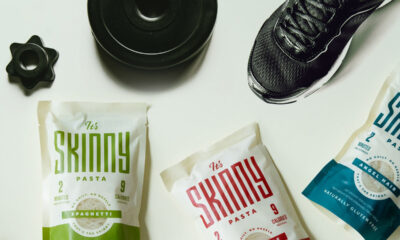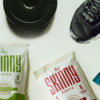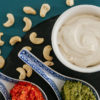Nutrition
A Runner’s Guide To Essential Nutrition
Clever food choices, eaten in the right quantities and at key times will make all the difference on race day. Here are the essential nutrition guidelines every runner needs to fuel a winning personal best.
Rain your gut
It’s vital to think about what you’ll eat on race day a couple months before the event so it’s locked into your routine well before the starter’s gun. About eight weeks before your race, figure out which brands and types of sports nutrition products settle best in your stomach. The only way to do this is to experiment. Simulate your race-day nutrition plan during your long runs and aim for 30-60g of carbohydrates, 24-48oz of water and 400-800mg of sodium per hour to keep your legs moving at full pace.
Go all-natural during race week
During taper week, where endurance athletes cut back their training by 40-60%, the goal is to fully recover from all the hard yards you’ve put in. Avoid any foods with little nutrition and replenish with those dense in nutrients, like fruits, vegetables, whole grains, beans, legumes, nuts and seeds. Shoot for 70% of your total calories from all-natural high-carbohydrate foods, like sweet potatoes, parsnips and pumpkin.
Shun the scale
Don’t be alarmed if you gain weight during a taper week. For every gram of stored glycogen (energy), the body stores 3g of water, which is used to help convert the stored carbs into energy once you race. So drink plenty of water and relax because you’ll be back to your old figures after the race.
Plan your final meal
Within a month of the race you should have your race-day meal plan completely dialed in by choosing from two macro options: either 1-2g of carbohydrates per 1kg of bodyweight, eaten 1-2 hours before the race; or if you take longer to digest your food then eat 3-4g of carbohydrates per 1kg of bodyweight 3-4 hours before. Most races are in the morning so practice eating a variety of breakfast foods before your long runs to see how they digest, and avoid high fat foods because fat takes a long time to digest. Good options are bananas, toast, oatmeal, bagels, fruit, cereal, potatoes or rice.
Get hot and cold with hydration
If you normally sip a latte in the mornings, then go for it on race day. Hot tea or coffee often helps clear out your bowels so you won’t have to lug around the excess weight. Be sure to hydrate with 1.5-2.5 litres of fluid 2-3 hours before the race so you can get rid of it before the gun but still be fully hydrated. strong the whole race
Load up on nitrates
Nitrates, found in plant foods like beetroot, arugula and Swiss chard, are converted into nitric oxide, a potent vasodilator that increases blood flow to the heart and working muscles. A good idea is to drink eight daily fluid ounces of a performance juice like Beet Performer for seven days prior to your race, and another eight fluid ounces the morning of the race to put yourself in the best position to finish strong.
Be a plain Jane on race day
Avoid anything new on race day, even if the delicious smells from the bakery en route to the race is making you weak at the knees. Eat the breakfast you have perfected over the last month at the time that works best for you and you’ll run strong.
Scoff your pre-race dinner early
Eat an early high-carbohydrate, low-fat meal to clock enough digestion time. Avoid heartburn foods, meaning anything that’s spicy, high in fat, deep-fried and highly acidic, like tomatoes, chocolate or mint. Foods low in fibre, like regular spaghetti, can even help prevent the dreaded runner’s trots, intestinal cramping and bloating, so they’re wise choices if you want your dignity in tact when you cross the finish line.
Carb up 30 minutes
To stoke your energy stores to their maximum, you can eat 15-30g of carbs within 30 minutes of the event start in the form of a gel, chews or sports drink. It’s the one time those gummy bears are firmly on the menu, without the guilt.
5 tips to ensure you run strong the whole race
1. Always carry a spare pair of shoelaces in your pre-race bag
2. Take a loo roll in your kit bag to the start area
3. Tape up your feet to avoid blisters
4. At the starting line try to keep off your feet to conserve energy
5. Name each of the final miles after someone you admire
Find fitness advice and more in every issue of TRAIN for HER magazine.














